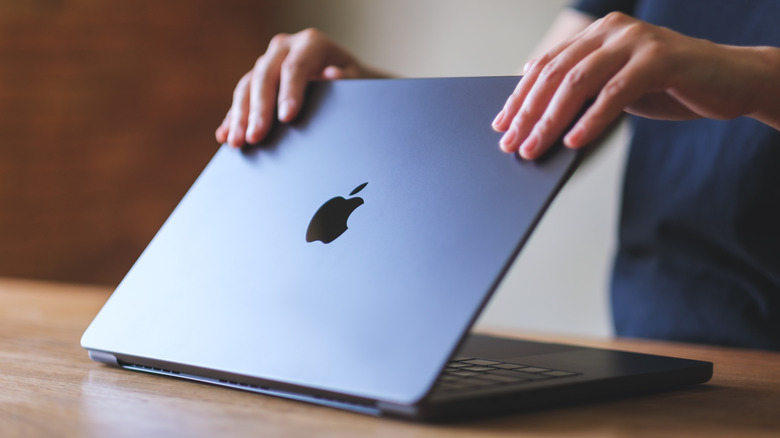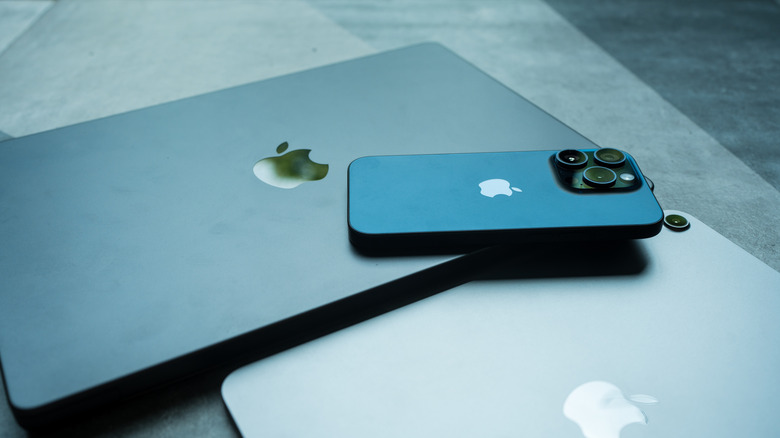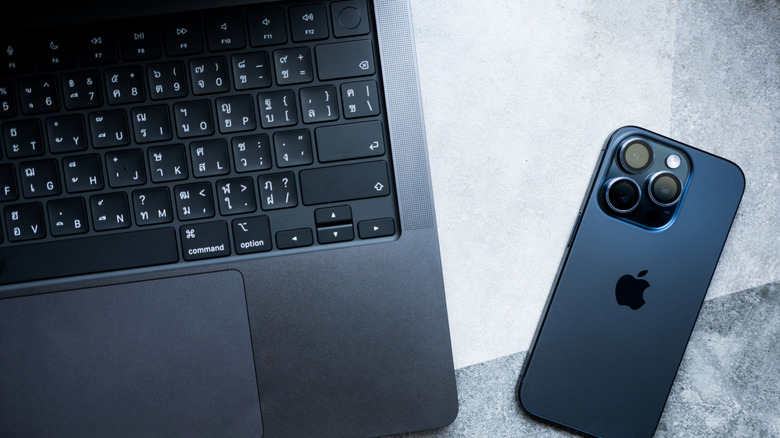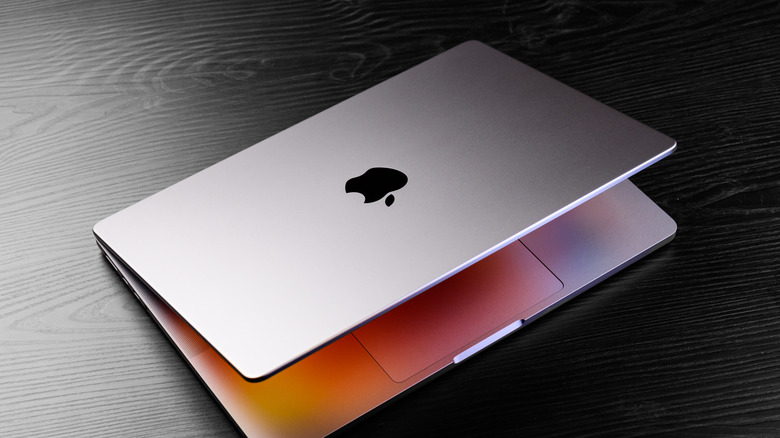What's The Average Lifespan Of A MacBook Pro, And Are There Ways To Extend It?
Apple's current laptop lineup has two options: the MacBook Air and the MacBook Pro. While many models from both the Air and Pro lineups pack the same Apple silicon chips, they target different users. The Air models are ideal for casual users who want a lightweight yet powerful device they can easily carry around, while the Pro lineup is built for professionals who need exceptional performance and reliability for demanding workloads like video editing, 3D rendering, software development, and more.
Naturally, this kind of performance comes with a higher price tag. At the time of writing, the 14-inch MacBook Pro starts at $1599, and the 16-inch variant starts at $2499. The price increases if you opt for additional internal storage, more RAM, a more powerful chip (like the M4 Pro or M4 Max), AppleCare, or other add-ons. After spending that much, it's natural to wonder how many years of use you can realistically expect. There isn't a set number of years after which a MacBook Pro will suddenly stop working. The answer depends on several factors, including how you use it, how well you maintain it, what chip your MacBook has, the kind of work you handle, and sometimes, just plain luck.
How long your MacBook should last, according to Apple
Although Apple doesn't explicitly state how long a MacBook Pro lasts, some of the information Apple discloses can help us make an educated guess. According to Apple, products that it stopped distributing for sale more than five and less than seven years ago are considered "vintage." As of now, there are thirteen Mac laptops on Apple's vintage list, eight of which are MacBook Pros. The most recent MacBook Pro models to make the list are from 2019, suggesting that Apple expects a typical MacBook Pro to remain functional for at least five to seven years.
While the "Vintage" label typically isn't a definitive indicator of when a MacBook Pro will stop working, it does signal when Apple may stop offering parts and service for it. Similar to the Vintage list, Apple also has an "Obsolete" list, which the company defines as products it stopped distributing for sale more than seven years ago. There are a total of 115 Mac laptops on the Obsolete list, 66 of which are MacBooks, and 39 are Pro models.
The most recent MacBook Pro to be added to this list is the 13-inch Retina model, which was launched in early 2015. Once Apple declares a device obsolete, all hardware services for it are discontinued, meaning you lose access to official repairs, replacement parts, and support from Apple-certified technicians.
How long MacBook Pros keep getting software updates
When it comes to software updates, Apple typically supports MacBook Pro models for several years beyond their release date, but there doesn't seem to be a set timeline. For instance, macOS Tahoe, which is the latest OS version Apple announced at WWDC 2025, will be the last software update for both the Intel-based MacBook Pro models launched in 2019 and 2020. This illustrates that Apple doesn't follow a strictly consistent timeline for software support.
Similar to how a device being classified as Vintage or Obsolete doesn't mean you need to stop using it, the same applies to the end of software updates. Just because a MacBook Pro no longer receives the latest macOS doesn't mean it suddenly becomes unusable. Though non-supported Macs will miss out on new features, you'll still be able to perform core tasks like browsing the web, using productivity apps, and running most software.
If you're thinking, "Wouldn't an unsupported Mac be more vulnerable to malware and exploits?" Apple has you covered there, too. Older versions of macOS receive security updates for a couple of years after they lose OS support. For instance, the Mac models that will receive the final major update this year will continue to get security updates for up to three more years. However, once a Mac loses security updates, it will be less secure and more vulnerable to viruses and malware. Over time, third-party developers of the apps you use might also begin to drop support for older macOS versions. This means apps may stop receiving updates or may no longer run at all.
How to extend your MacBook Pro's lifespan
Apple products are among the most durable devices out there, and the premium price tag reflects the longevity you can expect. However, it all boils down to how you use and maintain your MacBook Pro. When it comes to protecting your MacBook's hardware, make sure you invest in a sturdy case or sleeve to guard it against drops and scratches.
If you opt for a MacBook case, make sure you purchase one that offers proper protection without obstructing airflow. MacBook Pros have built-in fans for cooling, and using a case that blocks these vents can cause your device to overheat. It's also a good idea to research the types of products you should avoid for your Mac. For instance, Apple warns users against using webcam covers, as they could interfere with your device's ambient light sensor.
The Cupertino-based giant also suggests that users who use keyboard covers for their MacBooks remove them before closing the device, as the cover can damage the screen. Similarly, people on community forums like Reddit have reported that using glass protectors for their MacBooks has ended up damaging the display over time.
There are also some steps you can take on the software side to extend your MacBook Pro's lifespan. This includes regularly updating your device, adjusting settings to improve battery life, and managing storage efficiently. It's always a good idea to delete unnecessary files and applications when you can, as cluttered storage can slow down your Mac over time. Another way to extend your MacBook's life is by switching to an operating system that's still receiving updates, like Linux. So, taking care of both the hardware and software of your MacBook Pro is key to maximizing its lifespan.



